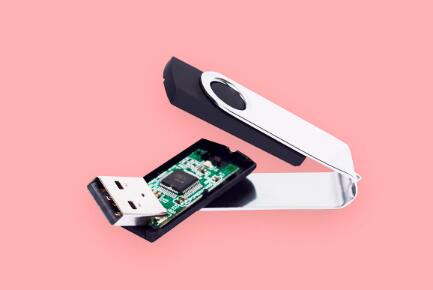Losing data from a USB flash drive can be distressing, especially if the files are important. Fortunately, with data recovery software like Recoverit Free, you can often retrieve lost files easily.
Of course, you can choose our Panda Assistant. The download is also free and you can try it for free. Its features and services are not inferior to other data recovery software, and it is definitely your best choice.
1. Data Loss Scenarios
Before diving into the recovery process, it’s essential to understand the common reasons for data loss on USB flash drives:
Accidental Deletion: Users often delete files unintentionally.
Formatting: A drive may be formatted mistakenly or due to a virus.
Corruption: File system corruption can render files inaccessible.
Physical Damage: Damage from drops, water, or wear can lead to data loss.
Virus Attacks: Malware can corrupt or delete files from your USB.

2. Why Choose Recoverit Free?
Recoverit Free is a user-friendly data recovery tool that supports a wide range of file types and is capable of recovering data from various storage devices, including USB flash drives. Some benefits include:
User-Friendly Interface: Simple navigation makes it accessible for everyone.
Multiple File Types: Supports recovery of documents, photos, videos, and more.
Preview Functionality: Allows users to preview files before recovery.
Cross-Platform: Available for both Windows and Mac.
3. Installing Recoverit Free
To start recovering data, follow these installation steps:
Step 1: Download the Software
Go to the official Recoverit website.
Select the version compatible with your operating system (Windows or Mac).
Click on the “Download” button to begin the download.
Step 2: Install Recoverit Free
Locate the downloaded file and double-click it to run the installer.
Follow the on-screen instructions to install the software.
Once installed, launch the application.
4. Preparing for Data Recovery
Before starting the recovery process, make sure to:
Connect Your USB Drive: Insert your USB flash drive into your computer’s USB port.
Ensure Sufficient Space: Ensure your computer has enough storage space for recovered files.
Close Other Applications: This helps optimize the recovery process.
5. Recovering Data from USB Flash Drive
Follow these steps to recover lost data from your USB drive:
Step 1: Select the USB Drive
Open Recoverit Free.
On the main interface, you’ll see a list of available drives.
Select your USB flash drive from the list.
Step 2: Start the Scanning Process
Click on the “Start” button to initiate the scanning process.
The software will begin scanning your USB drive for lost files. This process can take some time depending on the size of the drive and the amount of data stored.
Step 3: Review Scanned Files
Once the scan is complete, Recoverit Free will display a list of recoverable files.
You can navigate through the folders to find specific files or use the search bar to locate them quickly.
The files will be categorized into different types, such as documents, images, videos, etc.
Step 4: Preview Files
Select a file you want to recover.
Click on the “Preview” option to view the content before recovery.
This step is particularly useful to ensure you’re recovering the correct files.
Step 5: Recover Selected Files
After previewing, select the files you wish to recover by checking the boxes next to them.
Click on the “Recover” button.
Choose a location on your computer to save the recovered files. Important: Do not save the files back to the USB drive to avoid overwriting any other lost data.
Step 6: Verify Recovered Files
Once the recovery is complete, navigate to the folder where you saved the files.
Open the files to ensure they are intact and accessible.
6. Post-Recovery Tips
After successfully recovering your files, consider these tips to prevent future data loss:
Backup Regularly: Use cloud storage or external hard drives for regular backups.
Safely Eject USB Drives: Always eject USB drives properly before removing them.
Use Antivirus Software: Keep your system protected to avoid malware attacks.
Avoid Overwriting: Be cautious when using the USB drive to prevent overwriting lost data.
7. Troubleshooting Common Issues
If you encounter issues during the recovery process, here are some troubleshooting tips:
Issue 1: USB Drive Not Detected
Check Connection: Ensure the USB is securely connected to the port.
Try Another Port: Use a different USB port on your computer.
Test on Another Computer: Check if the USB works on another device.
Issue 2: Slow Scanning Process
Close Background Applications: This can free up resources for the recovery software.
Check Drive Health: If the drive is physically damaged, it might affect scanning speed.
Issue 3: Unable to Preview Files
File Corruption: The file may be too corrupted for preview. Try recovering it directly.
Check File Format: Ensure the file format is supported by Recoverit.
8. Alternatives to Recoverit Free
While Recoverit Free is a robust option, other data recovery tools are available:
Panda Assistant: The best data recovery software
Recuva: A free tool with a simple interface, effective for basic recovery.
Disk Drill: Offers a free version with a limited recovery feature.
EaseUS Data Recovery Wizard: Has a free trial, but limitations apply.
About us and this blog
Panda Assistant is built on the latest data recovery algorithms, ensuring that no file is too damaged, too lost, or too corrupted to be recovered.
Request a free quote
We believe that data recovery shouldn’t be a daunting task. That’s why we’ve designed Panda Assistant to be as easy to use as it is powerful. With a few clicks, you can initiate a scan, preview recoverable files, and restore your data all within a matter of minutes.
Subscribe to our newsletter!
More from our blog
See all postsRecent Posts
- Data recovery salt lake city utah 2025-04-18
- Data recovery sacramento 2025-04-18
- Data recovery miami 2025-04-18

 Try lt Free
Try lt Free Recovery success rate of up to
Recovery success rate of up to









